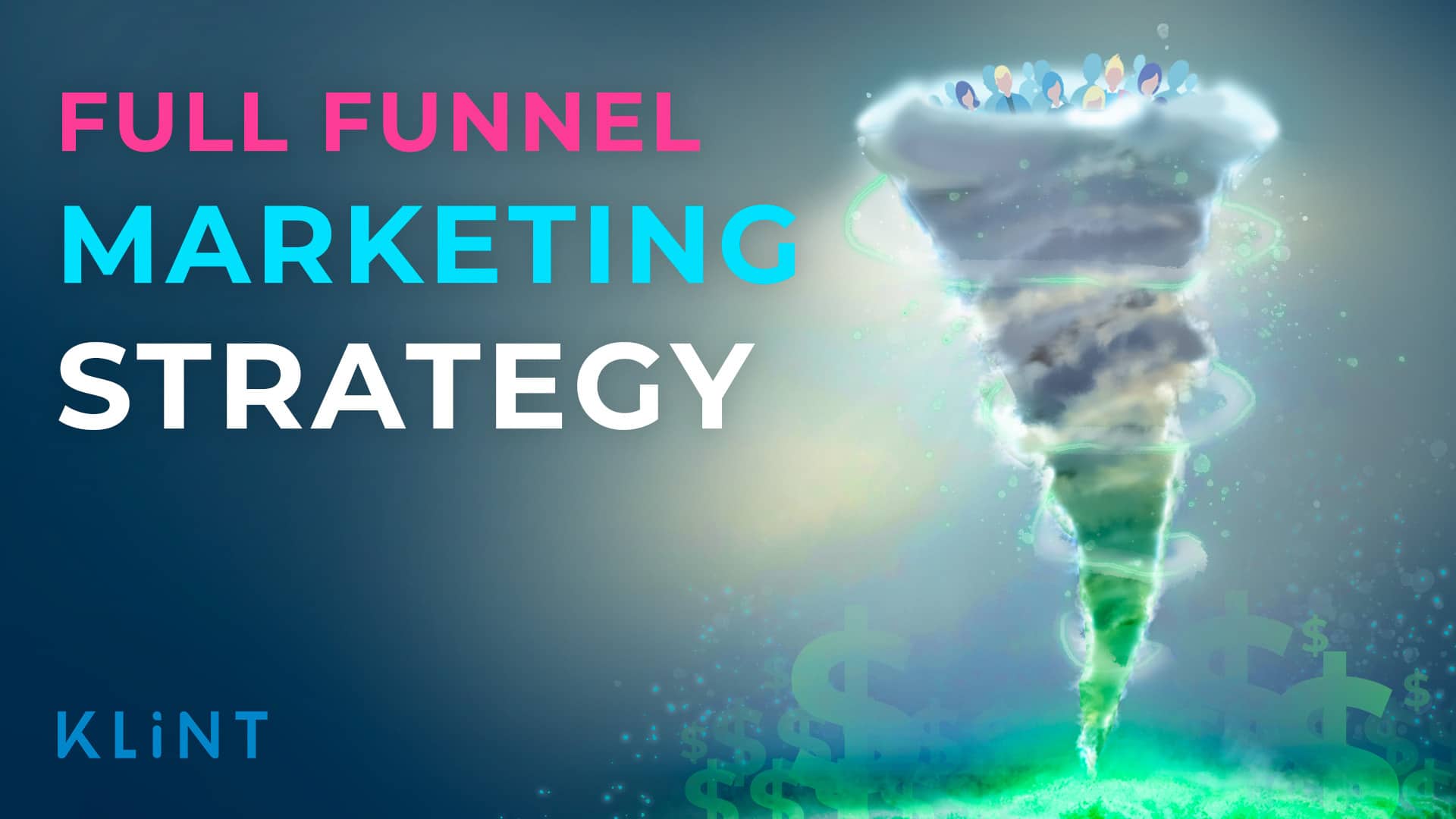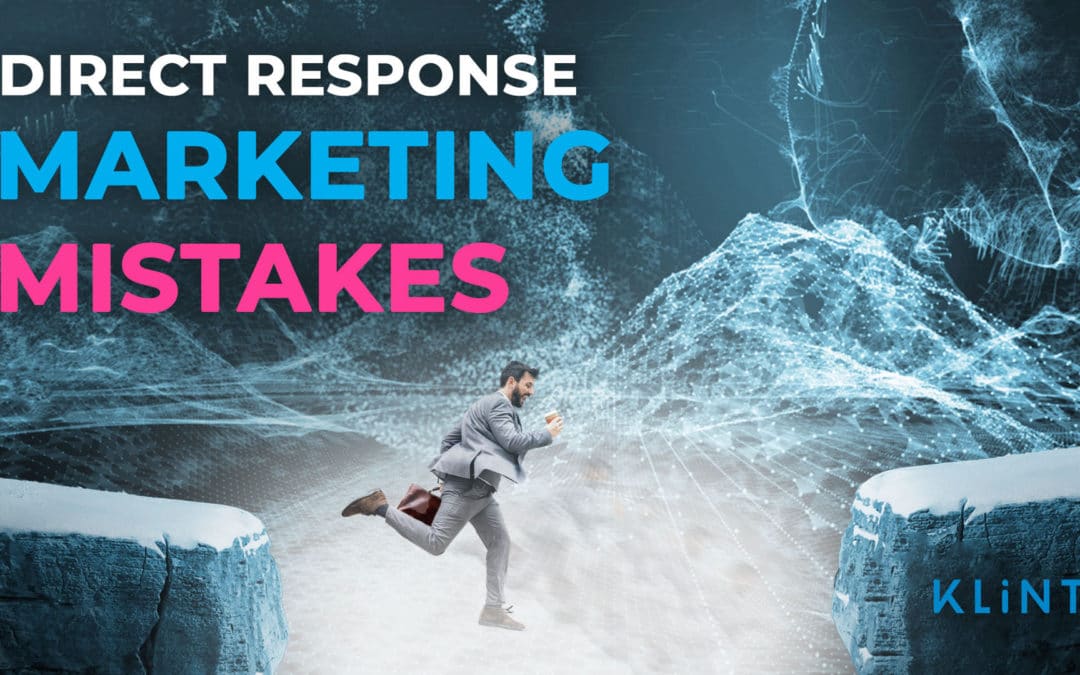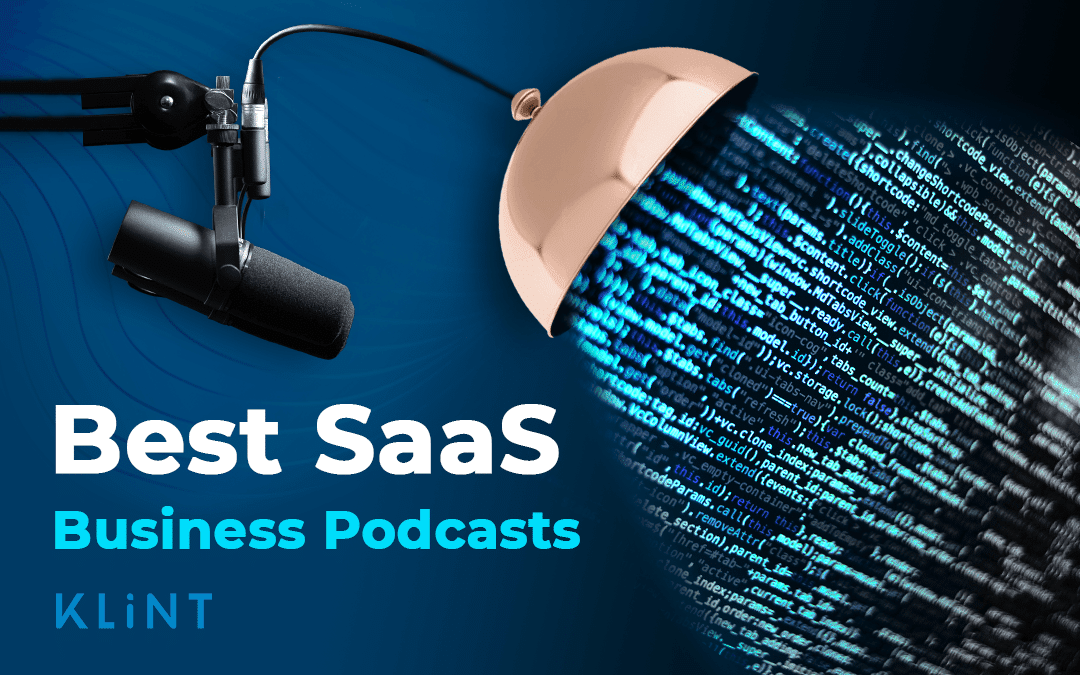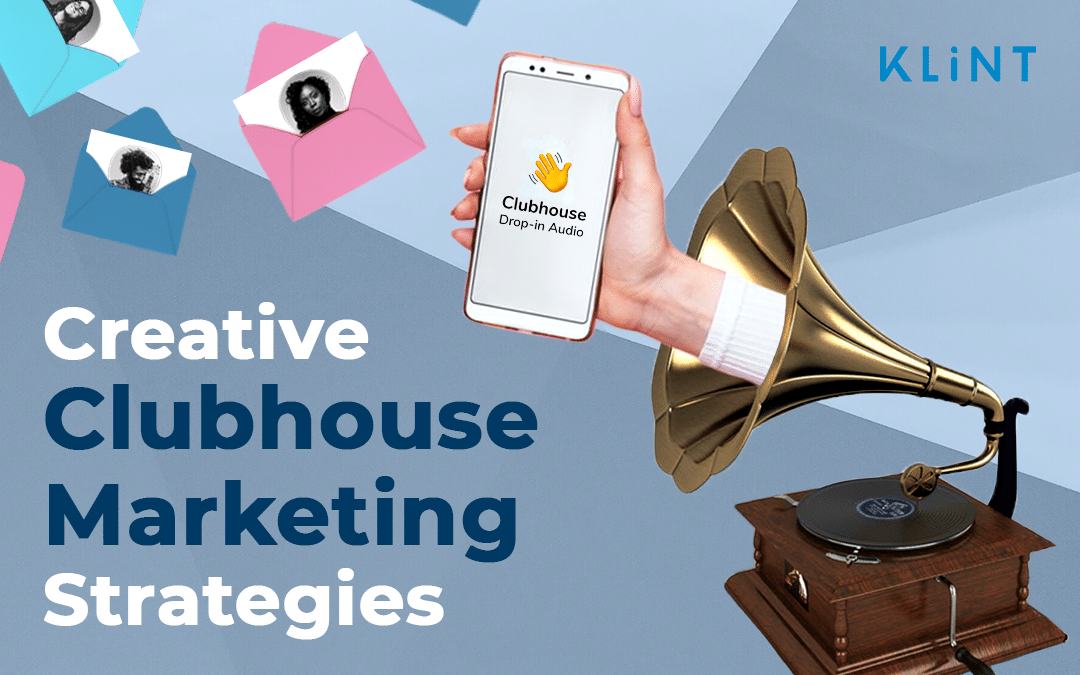Marketing can sometimes seem like a very abstract concept, but full-funnel marketing helps the modern marketer to define and visualize how marketing works with a brand funnel.
Are you struggling to keep customers engaged with your product? Does it feel like you are wasting a lot of time and spending a lot of money on potential clients who never end up actually making a purchase? Then this article is for you!
Businesses often lean on this full-funnel marketing model to develop their strategy. Full-funnel marketing allows entrepreneurs to visualize a clear strategy for introducing people to their brand and guiding them towards becoming regular customers.
Therefore, having a better understanding of what things like funnel metrics entail can help you create a better and more efficient marketing strategy.
In this article we will give you a clear idea of the different stages of a full-funnel marketing strategy from not only the marketer’s perspective but the customer’s perspective too.
In addition, this article contains a step-by-step guide to building the most successful full funnel marketing strategy possible.
What you will learn:
- The purpose of full-funnel marketing.
- The stages of the marketing funnel.
- The customer journey as it relates to the marketing funnel.
- Necessary steps for an effective funnel.
So, let’s dive in…
Table of Contents
What Is Full-Funnel Marketing?
Essentially, the main purpose of the full-funnel marketing process is to generate more leads, gain more customers and make more money.
The full-funnel strategy can be visualized as a series of steps customers go through before reaching the desired destination which is buying a particular product or service.
This is often represented via the traditional sales funnel, which many readers are likely to already be familiar with. For an extensive list of unique variations to the traditional sales funnel, check our list of 20 sales funnel templates.
Full-funnel marketing helps you to increase conversion rates and improve customer retention rates by optimizing the entire customer journey in your marketing strategy.
A full-funnel marketing strategy is important to digital marketing because it covers all aspects of your business process: from first contact with customers in the awareness phase to the purchasing stage which is the ultimate goal.
Quantifying the purchasing process is a critical step in a full funnel marketing strategy, and this is accomplished with the aid of funnel metrics.
Funnel metrics are defined by three main components:
- Traffic
- Conversion Rates
- Value
Traffic refers to the amount of people that enter your brand funnel. This means that you should be monitoring how many potential customers your website attracts and where these people enter the funnel.
Measuring traffic also means paying special attention to qualified leads, leads who have actual purchasing potential and are likely to progress through the entire brand funnel.
The funnel metrics conversion rate provides insight on the number of leads you retain and lose at every stage of the brand funnel. This identifies problem areas, allowing you to refine your full-funnel marketing strategy.
Value is the last of the funnel metrics to consider. Taking Value into account means looking at the brand funnel return on investment (ROI) by analyzing the cost per click/lead. This way you get a better understanding of which ads, channels, etc. do and don’t work.
With this knowledge, you can focus on the most efficient ways to approach a targeted audience.
Working with funnel metrics facilitates the pursuit of a goal. Getting specific about your KPIs solidifies the objectives of your full-funnel marketing, and increases the likelihood that those goals will be reached.
The Benefits: Why Is Full-Funnel Marketing Critical To Your Success?
Although not all leads will reach the end of your marketing funnel, full-funnel marketing aims to keep as many potential customers interested as possible until the final stage. Opting for such a strategy can help the company to:
- Visualize the customer journey
- Acquire data about potential customers
- Retain customers
- Pinpoint possible problems
These benefits of full-funnel marketing can save your business a lot in terms of both time and resources.
This is because of the incremental nature of full-funnel marketing – which allows its adopters to more easily isolate a particular stage and experiment with it rather than on the whole marketing strategy.
Moreover, the collected data from leads can be used to assess the current strategy and to create more personalized outreach.
Furthermore, implementing full-funnel marketing can provide a significant additional competitive advantage given that only 20% of marketers report having an established full-funnel marketing strategy.
The Customer Journey With Full-Funnel Marketing
Firstly, it’s important to remember that depending on your industry, full-funnel marketing can be divided into various stages with diverging names.
To avoid confusion, we are going to adopt the standard six-step approach with the following stages:
- Awareness
- Interest
- Consideration
- Intent
- Evaluation
- Purchase
In some cases these six stages are simplified to only three stages but for a better understanding of the process we opted to begin with the more elaborate version of full-funnel marketing.
In addition, when discussing full-funnel marketing it is important to consider how customer perception affects your marketing, so we will be looking at the different stages from the customer’s perspective.
Being aware of the customer’s thought process and the way they perceive your brand from top of the funnel until the bottom part is essential. Without taking a look from the customers’ point of view, potential problems or misinterpretation in the outreach could be overlooked.
Even though every potential client has a slightly different experience the step-by-step explanation provided below will help optimize the funnel.
Stages Of The Brand Funnel
Top of Funnel
We will start with the two first stages which represent the top of the funnel. The top of the funnel in this strategy is focused on customers’ first interaction with the brand.
During the stages of Awareness and Interest the emphasis lies on educational content rather than sales. Top of funnel interactions should help customers ease into the essence of the company instead of being encouraged to directly purchase products or services.
In this initial part of the funnel, the main objective is to introduce potential customers to products or services through generating as many impressions as possible.
1. Awareness stage – top of funnel
What is it?
As the name implies, in this first stage people become aware of your brand given they have most likely never heard of it before. The purpose of this top of funnel stage is to intrigue people to come to your website and get to know your product or service.
With full-funnel marketing you want to reach people in a way that ensures a positive first contact with your brand and gives them a good first impression which makes them want to come back.
Why is it important?
As this is the first interaction people will have with your brand, this stage should not be neglected.
From a customer perspective, people are looking for a meaningful experience. The best ad campaigns are those that catch the consumers eye and convince them to pause.
What are customers looking for?
To drive people to your site and product, they have to notice you.
Potential customers want to be approached in a friendly way and access an attractive website. The social media content customers see, in this top of the funnel stage, should therefore, be visually pleasing, as well as accessible, easy to read and clearly organized.
This will draw the customer’s attention to the brand and its products.
Once you have the client’s attention, they will want more information regarding the brand and what it can offer to them, this brings us to our second stage of full funnel marketing: Interest.
2. Interest stage – top of funnel
What is it?
In this phase of the top of the funnel, we do not talk about visitors anymore but about leads. Those leads are building interest in your brand at this stage of the brand funnel.
They became aware of your product or service in the first stage of their full-funnel marketing journey and now seek relevant content.
Interested customers expect your brand to provide them with all the information and content that is of importance to them.
Why is it important?
To try and build a meaningful interaction with the customer and maintain that relationship into the next stage, it is crucial to keep the customer engaged with the brand.
What are customers looking for?
In the Interest stage of the full-funnel marketing model, customers don’t want to go through myriad steps to find information about the brand. Customers’ needs should be found on the website or shared with them through newsletters, classes and so on.
Middle of funnel
Now that you have drawn attention to your website and people show some interest in your company, it is time to move to the mid funnel marketing.
Mid funnel marketing is when potential customers will do their research about the company to be able to make an informed purchase decision. This research implies comparing offers with those of your competitors.
Following the top of funnel stages, leads have already shown some interest in your brand by, for example, interacting with your brand online and therefore become Marketing-Qualified Leads (MQLs).
MQLs are already more likely to turn into sales than leads during the top of funnel stages of the full funnel marketing journey.
3. Consideration stage – mid-funnel
What is it?
In this mid funnel marketing stage we can introduce the third step: Consideration. When customers enter the consideration stage, this means that they are thinking about buying your product among other similar products from your competitors.
In the buyer’s journey, this phase allows them to gather additional information about the different brands they are considering and be confident that their purchase will be intelligent and well thought through.
During mid funnel marketing stages buyers are still not ready to receive any promotional content but rather still educational content.
Why is it important?
In this stage of the brand funnel, the content potential customers access can result in them opting for your brand or choosing for one of your competitors.
If buyers like the content and feel that the brand is genuine and trustworthy, only then might they consider your products over others.
What are customers looking for?
To convince potential customers and have them move further down the funnel, building a strong and trustworthy relationship with them is essential.
Therefore, the content buyers want is content centered around their needs and possible solutions your product can offer them.
Free trials can make customers more likely to lean towards a particular brand at this full funnel marketing stage.
4. Intent stage – lower middle funnel
What is it?
In this lower part of the mid funnel marketing strategy, your potential customers are getting closer to a possible purchase.
The potential customer has already taken actions that lead to finalizing a purchase such as: trying out a demo version or putting an item in their shopping cart.
Why is it important?
The Intent stage of full-funnel marketing marks a point at which customers need that little extra conviction to continue down the funnel.
By means of (a little bit) of time pressure, customers might already be more likely to take that next step.
What are customers looking for?
Potential customers are still looking to be convinced by additional information and quality content instead of promotional content.
This stage of the full-funnel marketing strategy is also a time where customers want to know about the unique selling points of the product, making it key in mid funnel marketing.
5. Evaluation – Bottom (lower) funnel
What is it?
Before clients actually purchase a product they enter an evaluation stage in the full-funnel marketing strategy. This is when the clients “reveal” whether they are going to buy a product or service that the company offers.
Why is it important?
This is the last chance to convince potential customers of opting for your business’s product instead of your competitor’s product.
This means this final decision-making stage is crucial to the brand funnel.
What are customers looking for?
Customers are looking to be assured they made the right purchase decision and for a smooth purchasing process. This is also the time where promotional content will be appreciated instead of educational content.
6. Purchase – Bottom (lower) funnel
What is it?
This stage is what the ultimate goal is of the whole full-funnel marketing strategy. Customers have made their decision to purchase the product or service and want to check out.
Why is it important?
It is still very important to ensure a good purchasing experience for the customer. Too many inconveniencies during the buying process and the client might abandon their purchase.
What are customers looking for?
In this final stage of lower funnel marketing, customers expect a positive checkout experience. Being offered advantageous promotions, some proof of the quality of the product, or a good post-purchase service can be important for the client’s decision.
FULL-FUNNEL MARKETING BONUS STAGES
The extra stages happen after the actual purchase. You may think that the full funnel marketing strategy stops after customers buy the product or service you are offering but you could not be more wrong.
In order to grow your clientbase, you have to retain your customers, so when the purchase is done, that’s when the real work begins!
The three “bonus” stages of the brand funnel, meaning Adoption, Loyalty and Advocacy should not be neglected.
Adoption – After buying, people still have to use the product and adopt it in their daily lives. It’s only then that clients are going to know whether they would or would not come back for more.
Loyalty – If the company maintains a positive relationship with its customers and offers them good customer service, it is more likely that customers will stick to your business.
It’s important to keep this in mind in order to persuade customers to come back for more and become regular visitors or buyers. Having a loyal customer base is very important for a consistent income.
Advocacy – Finally, there is the Advocacy stage which entails that customers are satisfied with the product and would even recommend it to their peers.
Why Full-Funnel Marketing Succeeds
Nowadays, customers are seeking meaningful interaction with brands and a personalized buying experience.
Full-funnel marketing taps into different aspects, from mapping out a whole customer journey, optimizing conversion rate and increasing brand awareness, a full funnel marketing strategy offers many benefits for your brand.
Mapping out customer journey
The purpose of full-funnel marketing is simple; increase sales by looking at the customer journey. In order to do this, a complete and structured plan is needed to approach people in the right way, with the right techniques and with clear goals.
This full-funnel marketing strategy offers a more structured, effective way of putting your brand out there. It also allows you to measure the impact of each stage and what does and does not work in your marketing strategy.
Mapping out your customer journey with a full funnel marketing approach can provide a clear idea of where you are losing potential customers along the customer journey. You can therefore focus on optimizing that specific problem area of the funnel.
Taking a step-by-step approach such as full-funnel marketing has a positive impact on sales, research shows that a full funnel marketing strategy would lead to 8% higher month-over-month sales growth.
Long-term strategy
Full-funnel marketing gives you an opportunity to set clear objectives you want to achieve and realistic goals.
By going through the top of the funnel until the lower part, your brand creates a relationship with their customers which can evolve into a long term partnership.
Following a satisfying experience, customers will either come back themselves for more purchases or recommend your brand to their peers.
Peer-to-peer or word of mouth marketing is one of the most effective ways to increase your clientele. Potential customers often opt for a product because of a recommendation.
Creating a loyal customer base can best be reached through a well thought out long-term strategy like full-funnel marketing instead of being seen as a separate tactic.
Optimize conversion rate
The ultimate goal of full-funnel marketing is to reach the purchase stage and hopefully to have a loyal customer that will come back for more. Although this sounds simple, 88% of orders are not converted into actual sales.
This is the reason full-funnel marketing has become an important strategy – it to maximize the amount of visitors that become customers.
The full funnel marketing strategy benefits conversion optimization by attracting new audiences and developing brand awareness where needed. Firstly, audiences can grow by up to 21% if a full-funnel marketing method is used.
Customers don’t always enter at top of the funnel – it is possible that people are already aware of your brand or are coming to your website upon recommendation and are ready to purchase your product.
Full funnel marketing provides a roadmap for each type of customer no matter where they enter the funnel. A full-funnel marketing method keeps customers engaged and converting, and even switching brand loyalties.
Creating a full funnel strategy also allows you to reflect on the audience you want to target and how best to convert them into customers.
To sum up full-funnel marketing:
- Helps to have a clear strategy
- Can pin-point at which stage you lose potential clients
- Allows a personal interaction with clients
- Builds customer loyalty
- Maximizes sale opportunities
Full-funnel marketing focuses on building a strong relationship with potential customers which leads to a higher chance of customers coming back for more and recommending it to people around them.
Before getting into the tips to maximize the use of a full funnel marketing strategy, it is important to state that you should know which audience you want to reach.
3 Simple Steps To An Effective Full-Funnel Marketing Strategy
As aforementioned, a full-funnel marketing strategy entails a multitude of stages, this can however be simplified into three parts: the top, middle and bottom of the funnel.
Based on this grouping we elaborated a detailed, more technical full funnel marketing strategy.
This section can help marketers implement concrete tricks in order to maximize the potential of full-funnel marketing.
Step 1. Top of the funnel: Awareness and Interest.
The main goal is to draw visitors’ attention and introduce them to the brand. In this stage, it is common to invest in events, campaigns, advertising and much more. The following checklist aims at attracting people’s attention without pushing them to buy.
Checklist
- Create video advertising
- Use infographics
- Post on social media
Extra tip – Important to keep in mind is the need for a clickable link that refers the potential customers directly to the brand’s website.
Step 2. Middle of the funnel: Consideration and Intent.
In the middle of the full funnel marketing strategy meaningful and personal interaction with the potential customers should be pursued with the following tips.
Checklist
- Focus on interactive, personalize marketing
- Share case studies, FAQ, and product comparison
Extra tip – Use machine learning (ML) to get a better idea of your visitors’ interest and create personalized content based on the collected data.
Step 3. Bottom of the funnel: Evaluation and Purchase.
To ensure a successful sale it is important to build trust with customers and maintain it. How do you convince people to finalize their purchase?
This is a question for both the Marketing team and the Sales team. At this stage of the full-funnel marketing strategy both have to work together to bring the, now, Sales-Qualified Leads (SQLs) to a successful purchase.
Checklist
- Identify uncertain clients
- Reach out by email to users who stopped in the middle of a purchase
- Offer relevant discounts and deals
Extra tip – Looking for some brand funnel templates?
How To Continuously Improve Your Full-Funnel Marketing Strategy
In order to drive more conversions, marketers must focus on the entire brand funnel. The two most important aspects of a successful marketing campaign are understanding what your customers value and understanding the customer journey.
Having a strong brand funnel is crucial to ensure that your customers place trust in you and your product. When developing a brand story, it’s important to create a cohesive narrative with all the different channels you use for marketing or advertising.
However, it is obvious that the reality is not as linear as full funnel marketing suggests. It might happen that some stages get skipped or overlap.
Questions to consider:
- Who is my audience?
- What does my audience want?
- Which message do I want to put out?
- How do I want people to perceive my company?
Additionally, this model does not always take everything into account. Elements such as customers who do research online but buy offline or peer influence through word of mouth deviate from the classic full-funnel marketing method.
This shows how complex and tricky attracting new customers can be.
It is crucial that businesses not only aim for profit but also aim at a good customer experience.
After having a good interaction with your business, clients will be more likely to come back and encourage their peers to do the same, this will build a strong customer loyalty.





0 Comments